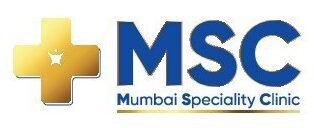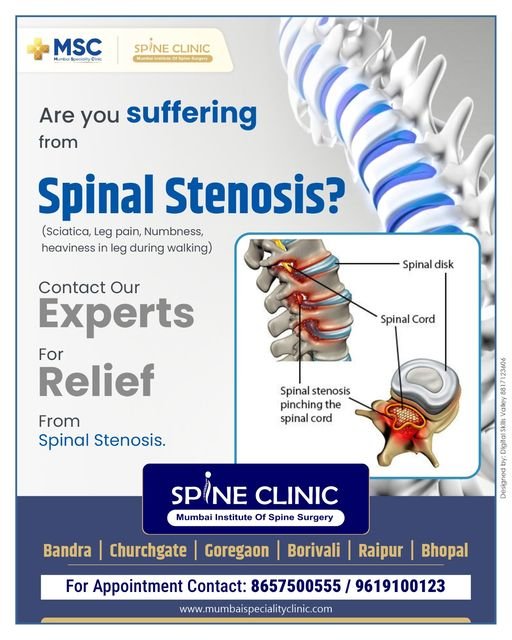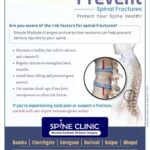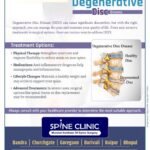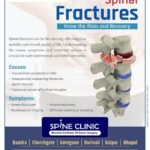What is Spinal Stenosis?
Spinal stenosis is a medical condition that involves the narrowing of spaces within your spine, which can cause pressure on the spinal cord and nerves. This condition is often seen in older adults and can lead to significant discomfort and mobility issues. The spinal canal, which houses the spinal cord and nerve roots, can become constricted due to various factors, leading to symptoms that can affect daily activities and quality of life.
Symptoms of Spinal Stenosis
The symptoms of spinal stenosis can vary depending on the location and severity of the narrowing. The most common areas affected are the cervical spine (neck) and lumbar spine (lower back). Symptoms can develop gradually and may include:
- Sciatica: This is characterized by pain that radiates from the lower back down through the buttocks and into the legs. The pain is often sharp, burning, or tingling and can be aggravated by standing or walking for extended periods.
- Leg Pain and Cramping: People with spinal stenosis may experience pain and cramping in one or both legs, especially when walking or standing. This condition, known as neurogenic claudication, often improves when sitting down or leaning forward.
- Numbness and Tingling: A common symptom is numbness or tingling in the legs, feet, or buttocks. This occurs because the narrowed spinal canal puts pressure on the nerves.
- Weakness: Some individuals may notice weakness in their legs or feet, which can affect their balance and walking.
- Heaviness in the Legs: A feeling of heaviness or fatigue in the legs, especially during physical activities, is another common symptom. This can make walking even short distances challenging.
Causes of Spinal Stenosis
Spinal stenosis is primarily caused by age-related changes in the spine. However, several other factors can contribute to the development of this condition:
- Osteoarthritis: The most common cause of spinal stenosis, osteoarthritis involves the wear and tear of cartilage in the joints, including the spine. This can lead to the formation of bone spurs, which can narrow the spinal canal.
- Herniated Discs: The discs that act as cushions between your vertebrae can dry out and shrink with age, leading to bulging or herniation. This can put pressure on the spinal cord or nerves.
- Thickened Ligaments: Ligaments in the spine can thicken and stiffen over time, encroaching on the spinal canal.
- Overgrowth of Bone: Conditions like Paget’s disease can cause bone overgrowth in the spine, leading to a narrowed spinal canal.
- Spinal Injuries: Traumatic injuries to the spine can cause dislocations or fractures that displace bone and damage the spinal canal.
- Genetic Factors: Some people are born with a naturally narrow spinal canal, which can lead to early onset of spinal stenosis.
Diagnosis of Spinal Stenosis
Diagnosing spinal stenosis typically involves a combination of medical history, physical examination, and imaging tests. Your doctor may ask about your symptoms, their duration, and any activities that worsen or alleviate them. During the physical exam, your doctor will check for signs of nerve dysfunction, such as muscle weakness, numbness, and abnormal reflexes.
Imaging tests are crucial for confirming the diagnosis and determining the extent of the spinal canal narrowing. These tests may include:
- X-rays: X-rays can help identify bone changes, such as bone spurs, that may be narrowing the spinal canal.
- Magnetic Resonance Imaging (MRI): MRI provides detailed images of the spine’s soft tissues, including the spinal cord, discs, and nerves. It is the most effective test for diagnosing spinal stenosis.
- Computed Tomography (CT) Scan: CT scans can provide detailed images of the spinal canal and help identify bony structures that may be causing compression.
Treatment Options for Spinal Stenosis
The treatment for spinal stenosis depends on the severity of the symptoms and the extent of the spinal canal narrowing. Options range from conservative treatments to surgical interventions:
- Physical Therapy: Physical therapy can help strengthen the muscles around the spine, improve flexibility, and enhance balance. A physical therapist can design an exercise program tailored to your needs, which may include stretching, strengthening, and aerobic exercises.
- Medications: Over-the-counter pain relievers, such as nonsteroidal anti-inflammatory drugs (NSAIDs), can help reduce pain and inflammation. In some cases, doctors may prescribe stronger medications, such as muscle relaxants or nerve pain medications.
- Steroid Injections: Corticosteroid injections can help reduce inflammation and relieve pain in the affected area. These injections are typically used when other treatments have not provided sufficient relief.
- Activity Modification: Modifying activities that exacerbate symptoms can help manage the condition. This may involve avoiding prolonged standing or walking and taking breaks to sit down and rest.
- Assistive Devices: Using devices such as a cane or walker can provide stability and reduce the risk of falls, especially in individuals with leg weakness or balance issues.
Surgical Treatments
If conservative treatments do not provide sufficient relief or if symptoms are severe, surgery may be considered. Several surgical options are available:
- Laminectomy: This procedure involves removing part of the vertebra called the lamina to create more space in the spinal canal. It is the most common surgery for spinal stenosis.
- Laminotomy: In this procedure, only a portion of the lamina is removed, which can relieve pressure on the nerves while preserving more of the spine’s structure.
- Foraminotomy: This surgery enlarges the foramen, the openings where nerve roots exit the spinal canal, to relieve nerve compression.
- Spinal Fusion: In cases where spinal instability is present, spinal fusion may be performed. This involves fusing two or more vertebrae together to provide stability and reduce pain.
Seeking Expert Help
At the Spine Clinic, part of the Mumbai Institute of Spine Surgery, our team of experts specializes in diagnosing and treating spinal conditions, including spinal stenosis. We offer comprehensive care and the latest treatment options to help you find relief from spinal stenosis. Our clinics are located in several convenient locations:
- Bandra
- Churchgate
- Goregaon
- Borivali
- Raipur
- Bhopal
For appointments, you can contact us at:
- Phone: 8657500555 / 9619100123
- Website: www.mumbaispecialityclinic.com
Conclusion
Spinal stenosis can significantly impact your quality of life, but effective treatment is available. Early diagnosis and intervention can help manage symptoms and improve your overall well-being. At the Spine Clinic, our goal is to provide you with personalized care and the most advanced treatment options to help you regain mobility and enjoy a pain-free life.
If you are experiencing symptoms of spinal stenosis, don’t wait to seek help. Contact the Spine Clinic today and take the first step towards relief and a better quality of life. For more information and to schedule an appointment, visit Mumbai Institute of Spine Surgery.










